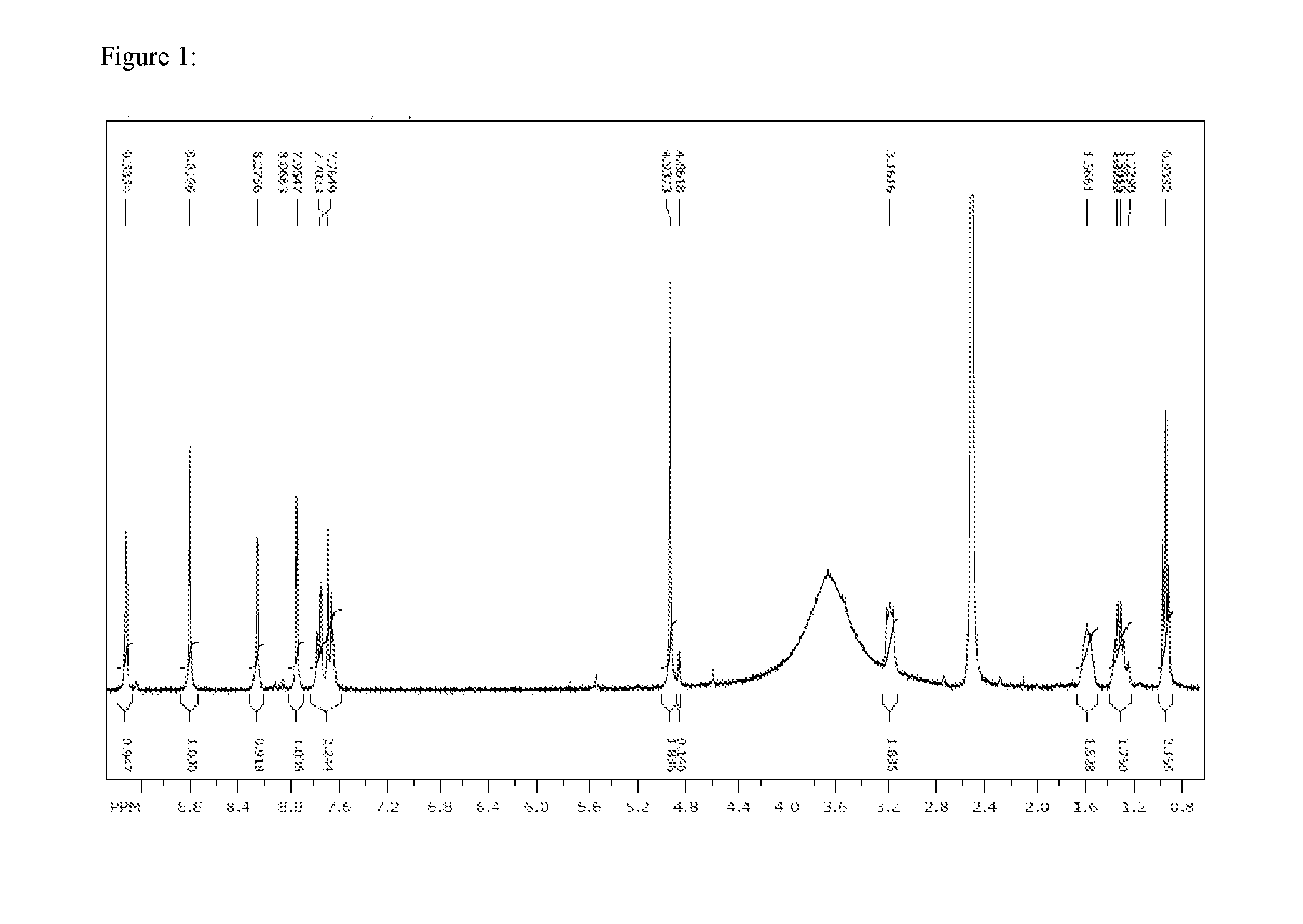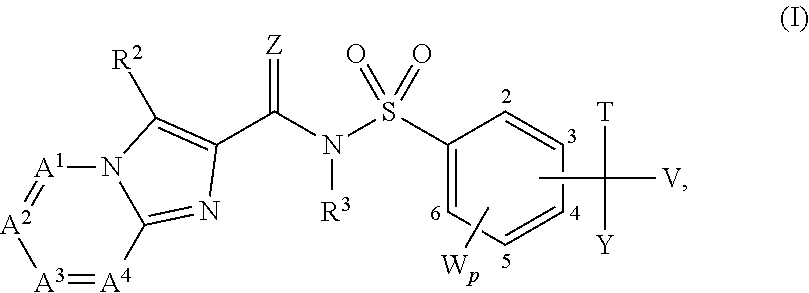Heterocyclic sulfonylamino(thio)carbonyl-derivatives with nematicidal properties
a technology of thiocarbonylderivatives and sulfonylamino, which is applied in the direction of antiparasitic agents, biocides, drug compositions, etc., can solve the problems of crop yield and quality, increased costs to consumers, and problems in livestock
- Summary
- Abstract
- Description
- Claims
- Application Information
AI Technical Summary
Benefits of technology
Problems solved by technology
Method used
Image
Examples
preparation examples
[1565]1H-NMR data
[1566]1H-NMR-data were determined with a Bruker Avance 400 equipped with a flow cell (60 μl volume) or with a Bruker AVIII 400 equipped with 1 7 mm cryo-CPTCI probe head or with a Bruker AVII 600 (600.13 MHz) equipped with a cyroTCI probe head or with a Bruker AVIII 600 (601.6 MHz) equipped with a cryo CPMNP probe head with tetramethylsilane as reference (0.0) and the solvents CD3CN, CDCl3, [D6]-DMSO.
[1567]1H-NMR-data of selected examples are listed in classic format (chemical shift 6, multiplicity, number of hydrogen atoms) or as NMR-peak-lists.
[1568]NMR-peak-lists:
[1569]If NMR-data of selected examples are provided in form of 1H-NMR-peak lists, then for every peak first the chemical shift δ in ppm and then, separated by a blank, the intensity of the signal in round brackets is listed. Between the δ-value—signal intensity pairs are semicolons as delimiters.
[1570]The peak list of an example is therefore listed as: δ1 (intensity1); δ2 (intensity2); . . . ; δ (intensi...
preparation example 1
Synthesis of 5-(((tert-Butyldimethylsilyboxy)methyl)-2-chlorobenzene-sulfonamide
[1581]
[1582]500 mg (2.26 mmol) 2-Chloro-5-(hydroxymethyl)benzenesulfonamide (known from WO 2009 / 118292) was dissolved in 22 ml dichloromethane (DCM) and 485 mg (4.52 mmol) 2,6-dimethyllutidine was added at 0° C. The mixture was stirred at 0° C. for 30 min, then 511 mg (3.39 mmol)tert. butyl-dimethyl silylchloride (TBDMSCl), dissolved in 8 ml dimethylacetamide (DMA) was added while maintaining the cooling. The resulted mixture was stirred for 10 min at 0° C., and for additional 10-20 h at 20° C. The progress of the reaction was monitored by TLC analysis (CHCl3:MeOH 10:1). When the reaction was completed, 5 ml of water was added, and the phases were separated. The aqueous layer was extracted with dichloromethane, the combined organic phase was washed with water, dried over MgSO4, filtered and evaporated to dryness. The residue was re-dissolved in toluene (0.5 mL), and evaporated to dryness. This procedure ...
preparation example 2
Synthesis of N-{[5-({[tert-butyl(dimethyl)silyl]oxy}methyl)-2-chlorophenyl]sulfonyl}-8-chloro-6-(trifluoromethyl)imidazol[1,2-a]pyridine-2-carb oxamide
[1585]
[1586]10.39 g (85.0 mmol) Dimethylaminopyridine (DMAP) and 13.59 g (70.9 mmol) 1-ethyl-3-(3-dimethylaminopropyl)carbodiimide hydrochloride (EDC×HCl) were dissolved in 115 ml dimethylacetamide and 7.50 g (28.35 mmol) 8-chloro-6-(trifluoromethyl)imidazo[1,2-a]pyridine-2-carboxylic acid were added.
[1587]The mixture was stirred for 60 min at 20° C., then 10.0 g (29.8 mmol) 5-(((tert-butyldimethylsilyl)oxy)methyl)-2-chlorobenzene-sulfonamide was added. The mixture was stirred at 20° C. overnight. The progress of the reaction was monitored by TLC analysis (CHCl3:MeOH 10:1). When the reaction was completed, the mixture was poured onto 115 ml water, the aqueous solution was extracted two times with 300 ml ethyl acetate, the combined organic phase was dried (MgSO4), filtered and evaporated to dryness. The residue was re-dissolved in tolu...
PUM
| Property | Measurement | Unit |
|---|---|---|
| composition | aaaaa | aaaaa |
Abstract
Description
Claims
Application Information
 Login to View More
Login to View More - R&D
- Intellectual Property
- Life Sciences
- Materials
- Tech Scout
- Unparalleled Data Quality
- Higher Quality Content
- 60% Fewer Hallucinations
Browse by: Latest US Patents, China's latest patents, Technical Efficacy Thesaurus, Application Domain, Technology Topic, Popular Technical Reports.
© 2025 PatSnap. All rights reserved.Legal|Privacy policy|Modern Slavery Act Transparency Statement|Sitemap|About US| Contact US: help@patsnap.com



